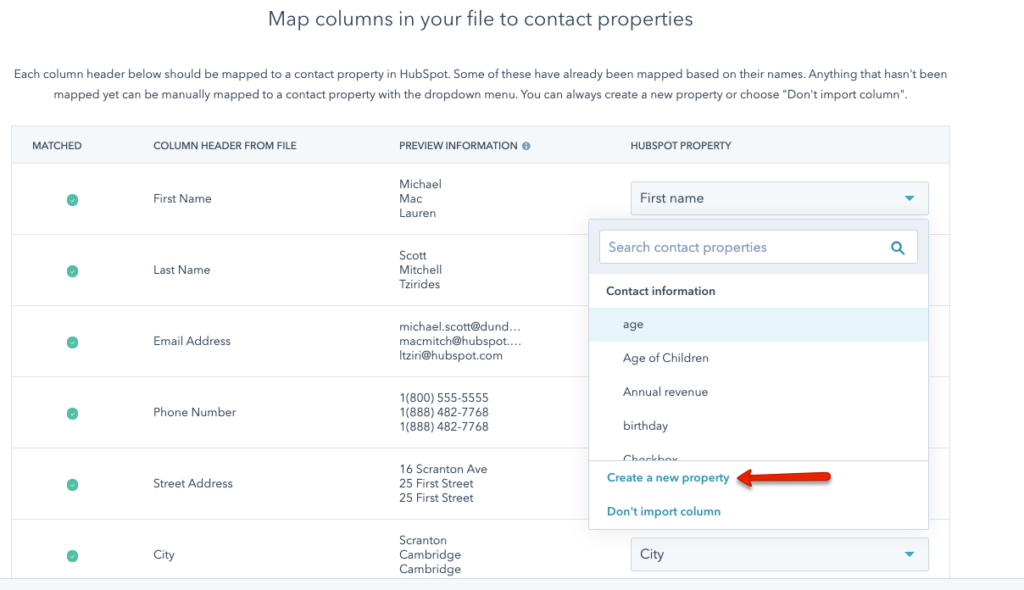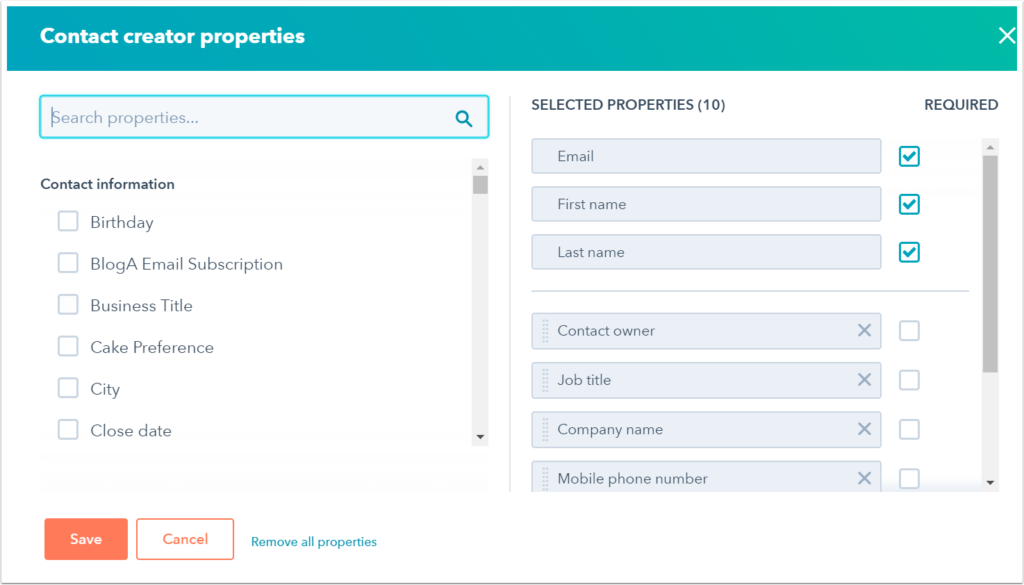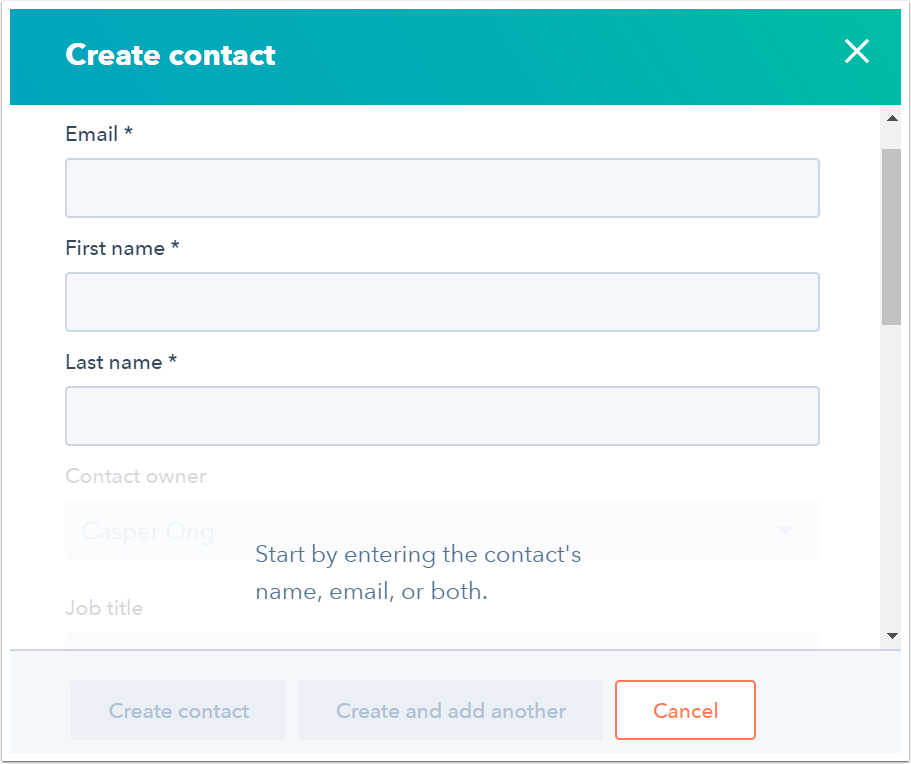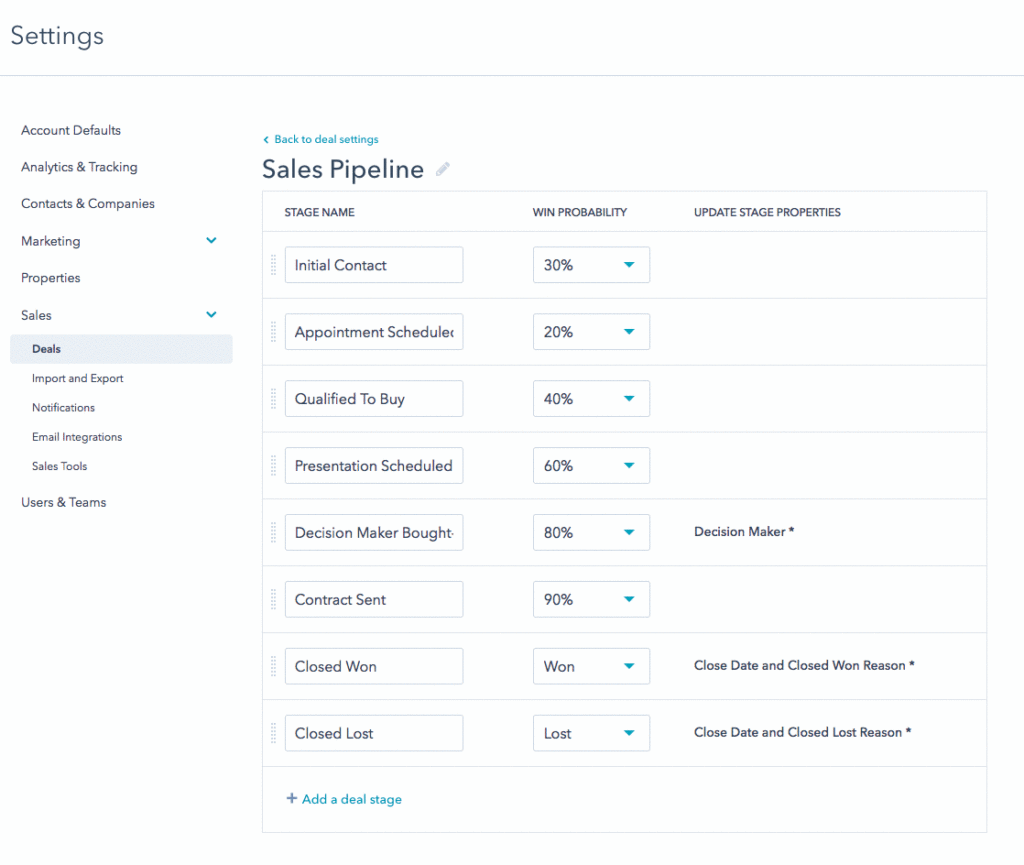HubSpot is a powerful tool that can help your business grow, but it can only reach its full potential with quality data. Cluttered and disorganized data is a common issue with HubSpot users that stops them from maximizing the power of HubSpot. Some common ways people poorly manage HubSpot data are:
- Duplicate properties
- Records are missing required information
- Deal records are not fully updated
- Too many users are making changes
In this post, we’ll go over each of these common issues and how you can set up your portal to keep your data clean.

1. Duplicate properties
With HubSpot as your database and source of truth, one primary interest is inputting information on leads and customers into HubSpot contact properties. Since you can add contacts to HubSpot in many different ways and from many different sources, a potential issue that can arise is the duplication of properties. This negatively affects segmentation and reporting.
Imagine a scenario where you have created a field called Sales Region to hold information on your contacts. One of your employees comes back from an event and would like to import this information into HubSpot but they don’t know Sales Region has already been created in HubSpot. Ignorant to the problem they’re causing, the employee creates an entirely separate property, Sales Territory, to track the exact same data as the Sales Region property.

This simple mistake can throw off segmentation strategies, lead to sending out incorrect email messaging, assign leads to the wrong sales owners, mess up reporting, and can create a much bigger mess than you want to deal with.
To avoid this issue, think about creating an import template for your employees. Any CSV imported into HubSpot must be formatted properly with the column header corresponding to a property within HubSpot. With admin privileges, you can create and distribute a CSV template for your employees to use when importing information into HubSpot.
With this solution, the column headers of the template will match with existing properties in your portal. This means your employees should never feel the need to create new properties in your HubSpot portal. Sales reps would need to communicate the need for a change to the people in control of the HubSpot portal so the admins can ensure something brand new is actually being created.
2. Records are missing required information
New leads can be generated from anywhere. If your sales team is invited to source new leads at in-person events, they will want to immediately enter lead information in HubSpot and can rush through without getting thorough, accurate information.
When auditing manually created contacts, many admins face a lack of consistency with the contacts in the system. Some of the contacts will have all the information on their contact record that you could ask for. Others will only have First Name and Last Name as the sole pieces of information. This can provide a challenge for nurture strategies, data integrity, and reporting.
To avoid inconsistencies on new contact records, admins can set up the fields that are seen when creating a record.

In the image above, there is a portal in the right hand column showing the properties that will show up in the screen when creating a contact manually. For admins with Sales Hub Professional or Enterprise and Service Hub Professional or Enterprise, you will have the ability to set up these fields to be required when manually creating a contact.
Once those settings are saved, anyone who clicks Contacts > Create Contact will see those fields in their screen like the image below. The stars next to each field indicate which fields are required in order to successfully create the contact.

3. Deal records are not fully updated
Once a lead is speaking to a sales rep, the rep usually creates a deal in HubSpot to keep track of the progression of that deal through a Sales Pipeline until the deal is marked as Closed Won or Closed Lost. Deals can change as the conversation continues. Additional products and services can be added to the deal which would change the deal amount, or the appointment date could change – any number of things could change. Many customers wait for their sales reps to remember to accurately update these pieces of information on the record so reports will reflect the actual state of the deal on the pipeline. But asking sales reps to spend more time doing data entry and to remember which deals to update is a hassle for them and an easy way to start running inaccurate reports.
To avoid this, admins can keep deal records up to date by changing the settings of the pipelines in their portal. By customizing the deal stage properties of their pipelines, anyone who tries to move a record to a different deal stage with insufficient records will be greeted by a pop-up asking them to update a deal property before they can successfully move the deal.

4. Too many users making changes
Many admins mention that their HubSpot portal can feel messy because there are too many people making changes all at the same time. This could lead to outdated information, incorrect reports, or general confusion amongst staff.
To understand who is allowed to take certain actions in the HubSpot portal, you may look to change user permissions for employees who work in the portal.
Some permissions you may consider changing for certain users (mostly blocking permissions):
- Import access
- Export access
- Workflows
- Assign View, Edit, or Publish Access to Marketing Tools
- Deals
By keeping tighter control over who can change what, you’ll know exactly who you should be talking to if you see changes happening in your portal.
Let MINDSCAPE help with a HubSpot Portal Audit
As a HubSpot Platinum Partner, one of the services we offer to our clients here at MINDSCAPE is a HubSpot Portal Audit. This audit reveals any weak points in your data management with HubSpot so you can clean up the data in your portal and keep it clean.





